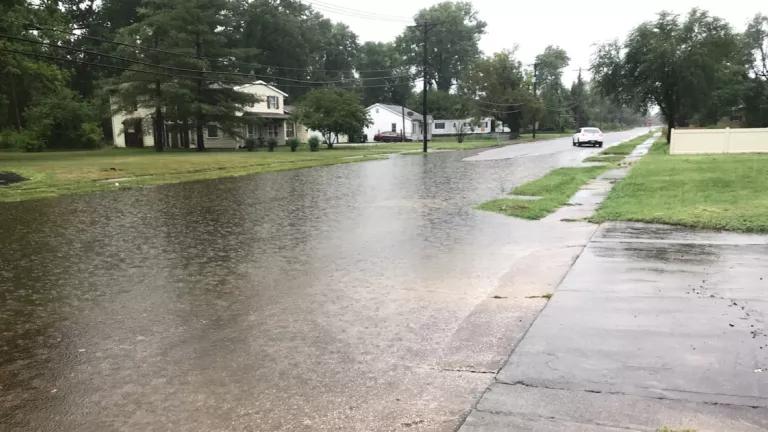Preventing the Next Drinking Water Emergency
States must update emergency response plans to avert the next water crisis.

Luis Martinez carries a water container to his car after filling it from a spigot at Haden Park in Houston, February 18, 2021.
There is a drinking water crisis in Texas right now, where seven million people lack safe water because of this week’s winter storms. The same thing has happened over and over in recent decades—in Louisiana, Puerto Rico, California, Ohio, and elsewhere—after hurricanes, wildfires, floods, and other disasters. This latest tragic example reveals once again a disastrous lack of preparedness to deal with drinking water emergencies in the United States.
States and the federal EPA should be better prepared when this happens. Current law requires states that manage their own drinking water program to have adequate emergency response plans in place. EPA is required to review those plans annually. But states have been lax in writing and updating plans, or EPA hasn’t adequately vetted those plans, or both. That has to change before the next disaster threatens access to safe water.
States and EPA share responsibility for ensuring drinking water safety. The Safe Drinking Water Act authorizes EPA to set national standards for drinking water. States can apply to EPA for primary enforcement authority, referred to as “primacy,” if they meet certain requirements. When states are granted primacy, they become eligible to receive substantial federal funding. Every state except Wyoming and Washington, D.C. has drinking water primacy under the law.
Among the six requirements for primacy is that the state “has adopted and can implement an adequate plan for the provision of safe drinking water under emergency circumstances including earthquakes, floods, hurricanes, and other natural disasters.” EPA has to review those plans every year to ensure compliance with the law. Thus, one of the most basic requirements for state drinking water management is to be ready to deal with emergency situations.
But states’ repeated failure to ensure access to safe drinking water during emergencies proves that current emergency response plans are inadequate. In Louisiana, New Orleans residents were instructed to boil their tap water for over a year after Hurricanes Katrina and Rita in 2005. Nearly half of Puerto Rico’s 3.4 million residents lacked safe water for more than a week after Hurricane Maria in 2017, and high levels of some contaminants persisted for months after water service was restored. Other disasters knocked out access to safe water for 300,000 people in Charleston, WV, half a million people in Toledo, OH, and many more elsewhere.
Wildfires increasingly jeopardize access to safe drinking water; recent fires in California caused serious contamination of water supplies in many communities. As we face escalating threats of storms, droughts, and wildfires supercharged by climate change, the ability of governments to provide safe drinking water during and after emergencies is critical.
This is also a racial justice issue. The health harms from lack of access to safe drinking water are borne disproportionately by historically disadvantaged and marginalized communities. Ensuring access to safe water during emergencies is essential to promoting racial equity and combating environmental injustice.
EPA should require that every primacy state revise its drinking water emergency response plan now—before the next disaster strikes—and EPA should scrutinize those plans to ensure they’re adequate. EPA has written guidance (in 1976) and recommendations for states to use when preparing emergency plans in the past, but that clearly hasn’t been sufficient. EPA should therefore update its old guidance to help states craft better emergency plans, and that updated guidance should include specific advice on how to ensure equitable access to safe water, and how to deal with the increase in climate-fueled disasters.
If a state emergency response plan is deficient, EPA can withdraw primacy and run the state’s drinking water program itself. EPA has never taken that step, but it should be prepared to do so if necessary.
It will take foresight, planning, investment, and meaningful oversight for states to ensure continued access to safe water during and after the next emergency.



